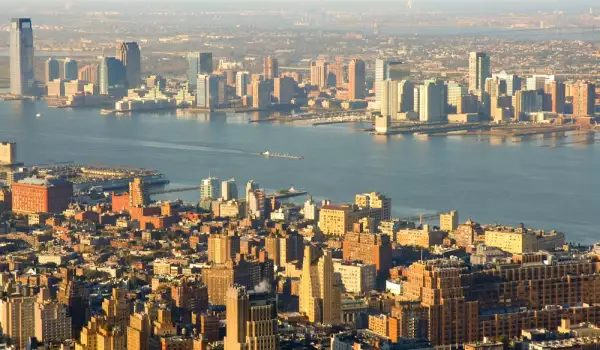Jersey City

Jersey City is a city located on the territory of Hudson County, New Jersey. In the City of Jersey City 247 597 people live, making it the second largest city in the territory of New Jersey after Newark. Jersey City is the seventy-second most populous city in the United States. Jersey City is an important commercial and transportation hub.
The grounds, which now house Jersey City were inhabited by the Lenape Indians, who were later called Delaware. In 1609 Henry Hudson sought an alternative route to East Asia.
He came to the place which later became known as North River. After exploring the area over a week and meeting with local Indians, he continued on his way. In 1621, the Dutch West India Company was ready to govern this territory. Two years later, this area became a province of the Netherlands.

Michael Reyniersz Pauw received grants for the land and in return undertook to establish a village with a population of not less than fifty persons within four years. He chose the west coast of North River, which actually is today known as the Hudson River and bought land from the Lenape Indians officially.
That was in 1630. Pauw does not meet the challenge to fill the place with people and was forced to sell the property of the company in 1633. That year, the superintendent of the colony Jan Evertsen Bout built the building that called Pavonia. The name derives from the surname of Pauw, which is translated as a peacock. Soon after, another house was built, which became home to Cornelius Van Vorst. His family became the leading name in the city and contributed much to its development.
Lenape Indians were killed off by the Dutch in 1643, it became known as the Massacre of Pavonia.
During the American Revolution the area was in the hands of the British who then controlled New York.
Jersey City was recognized as a city in 1820. In 1840 it became part of the new Hudson County.

After the Civil War came the idea of uniting the cities in Hudson County.
In the nineteenth and twentieth century, Jersey City is developing as a port and factory town. New Jersey is a favorite spot for expatriates who are rushing to the United States. Before World War II here arrived Irish, Italians and Germans. Most large companies at this time are related to the railroad. As an alternative to the ferry, in 1911 appeared a train that connects the city to Manhattan.
In 1916 an explosion broke out, known as The Black Tom. It was sabotage by German agents who blew up U.S. ammunition to deter its use during the First World War.
In the seventies of the twentieth century, the city's population declined, crime rose and the economy collapsed. In thirty years Jersey City lost 75 000 of its inhabitants.
In the eighties of the twentieth century, the economic revival of the city attracted new people and new investment. The city is headquarters to very solid companies, which attracts many people looking for work.















